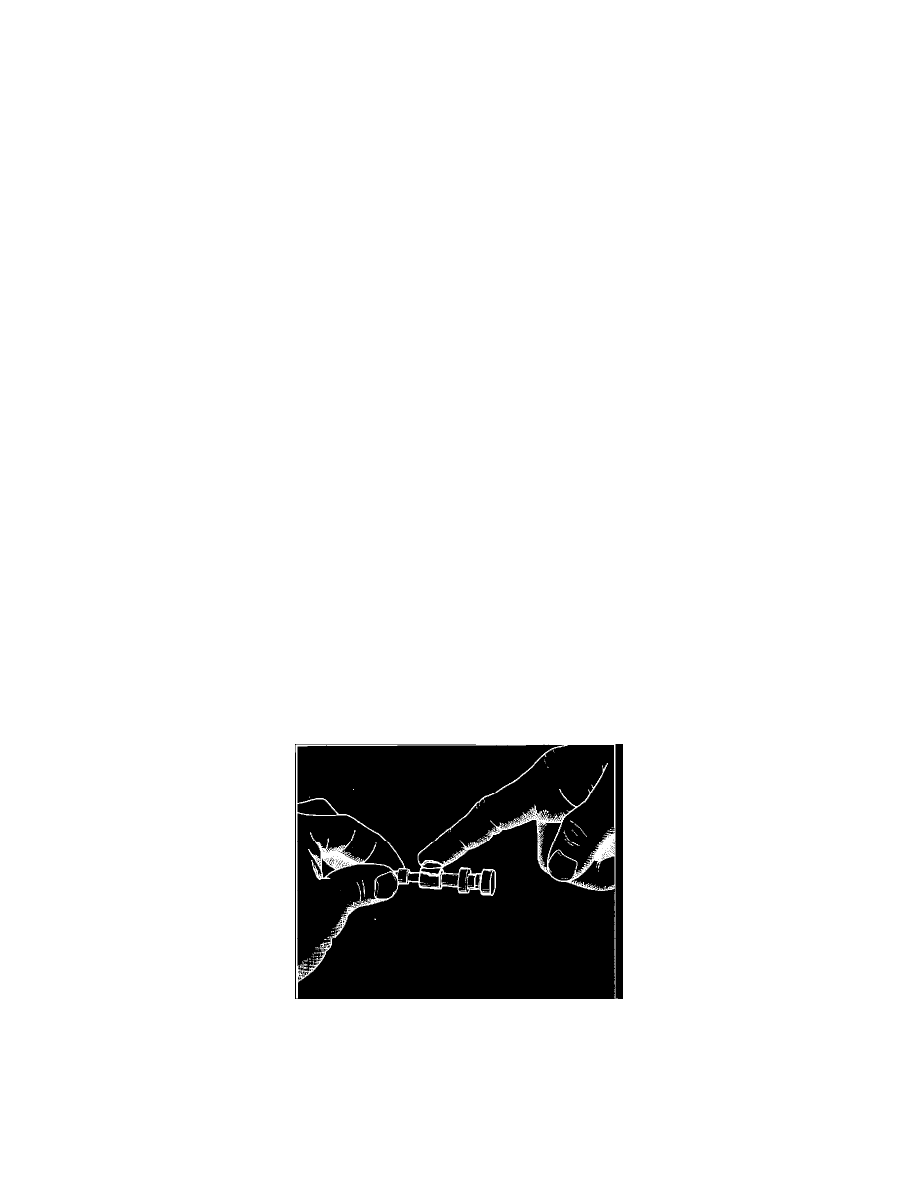Fleetwood V8-368 6.0L VIN 9 FI (1982)

9.
Place the control valve on a clean surface in the exact order as it was removed from the valve body. Follow the procedures in steps #7, #8 and
#9 to remove all valves and bushings from the valve body. (Layout of the valves, springs and bushings on a clean, lint free towel will help to
keep parts organized).
10.
Remove pressure switches, pipe plugs and T.C.C. solenoid, if applicable.
11.
Clean one valve assembly at a time by washing the valves, springs and bushings in clean solvent and drying with compressed air.
12.
Clean the valve body casting with clean solvent and dry with compressed air.
Inspection of Control Valve Assembly Components
1.
Inspect the valve body casting for:
^
Cracks
^
Porosity
^
Damaged machined surfaces
^
Nicks or burrs in valve bores
^
Flatness of valve body to case mating surface (using a straight edge or by inspecting the gaskets for uniform compression)
2.
Inspect valves for:
^
Burrs
^
Nicks
^
Scratches
^
Scoring
3.
Inspect valve bushings for:
^
Porosity
^
Burrs
^
Nicks
^
Scratches
^
Scoring
4.
Inspect springs for:
^
Damaged or distorted coils
STUCK VALVE SERVICING
If during disassembly of the control valve assembly a valve is found to be sticking in a bushing or bore, use the following procedure to service the valve
and bushing or bore:
FIGURE 4 - VALVE BUSHING
1.
Apply a small amount of "Micro fine" lapping compound to the valve lands. (The lapping compound should be 900 grit or finer.) Reinsert the
valve into the bushing (or bore in the valve body). (Refer to Figure 4).
